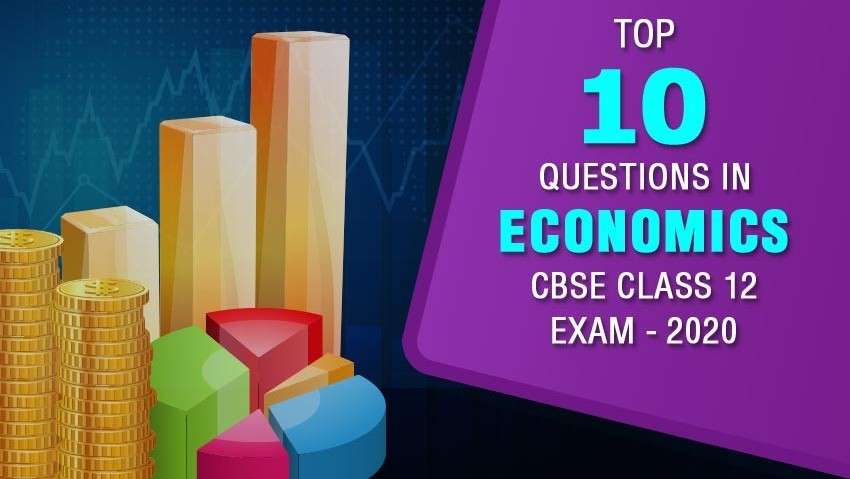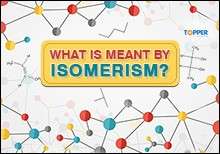Top 10 Questions in CBSE Class 12 Economics Exam - 2020

Check top 10 important Economics questions and answers that will help you plan your study and revision in CBSE Class 12 Economics exam - 2020
By Topperlearning Expert 06th Mar, 2020 | 07:10 pm
ShareEconomics is an important subject and if a students pays proper attention, it can be scoring too. As the students are in the revision phase now, we advise them to give more importance to the popular topics and focus on them. During CBSE Class 12 2020 Board Exam, your Economics paper have two sections.
Section A is of Macroeconomics which is 40marks and Section B which is a new sub-subject is Indian Economic Development which is also of 40marks.
Important Questions & Answers CBSE Class 12 Board Exam 2020 : Economics
INDIAN ECONOMIC DEVELOPMENT
- ‘The Indian economy had been exploited under the British rule’. Highlight the state of the Indian economy in the pre-independence period.
Suggested Answer:
At the time of independence, the state of the Indian economy was stagnant, backward and faced massive poverty.
The state of the Indian economy during pre-independence can be summarised as follows:
i. Agricultural sector: The agricultural sector which was the chief source of livelihood suffered from surplus labour and low productivity. Farmers were exploited by the zamindars.
ii. Handicraft industry: The world famous handicraft industry of India was destroyed and this created massive unemployment. Although modern industry growth began, growth was slow and restricted in production.
iii. Industrial sector: The industrial sector lacked capital goods industries and modernisation.
iv. Role of the public sector: The role of the public sector was restricted to certain areas such as power generation, railways and ports. Direct participation was required by the government for the growth of the Indian economy.
v. Foreign trade: It was directed towards the industrial development in Britain.
vi. India became a mere exporter of raw materials, and in turn, an importer of finished goods from Britain. This affected the locally made goods, and the demand for imports increased.
vii. State of infrastructure: The infrastructural development which was undertaken by the colonial government such as the railways and the Suez Canal was merely made to exploit the Indian economy. Raw materials could easily be transported to Britain, and finished goods from Britain could easily be transported to India.
viii. Demographic summary: Indians suffered from high mortality rates and low life expectancy, which indicated that backwardness and widespread poverty existed in India at that time.
2. Identify the areas where major reforms were undertaken under the liberalisation policy. Briefly explain each area.
3. ‘There is an imbalance between GDP growth and employment growth in India’. Justify this statement.(Use relevant data/figures to support your answer)
4. Who regulates the power management in the capital?
5. Outline the strategies for attaining sustainable development in India.
MACROECONOMICS
1. Explain the classification of: [3M] [Modified question asked in 2017, 2018, and 2019]
a) Final and intermediate goods with examples
b) Stocks and Flows
Suggested Answer:
|
Final Goods |
Intermediate Goods |
|
Goods which are used either for consumption or investment. |
Goods which are used either undergo further production or are used for resale. |
|
Goods which will not pass any more stages of the production process and are ready for use by their final users. |
Goods which are within the boundary line of production. They are not available for use by their final users and the value is yet to be added to these goods. |
|
Value of intermediate goods is merged with the value of final goods. Thus, only the value of the final good is included when estimating national income. |
Value of intermediate good is not included in the estimation of national income.
|
|
Example: Furniture purchased by a school |
Example: Paper purchased by a newspaper printing agency |
|
Stock |
Flow |
|
Stock is a variable which is measured at a particular time. |
Flow is a variable which is measured over a long period of time. |
|
Stock is static. |
Flow is dynamic. |
|
Time dimension is not applied to the stock concept. |
Time dimension is applied to the flow concept. |
|
Examples: National wealth and bank deposits |
Examples: National income and interest on capital
|
2. Which of the following items will be included in the national income? Give reasons
a. Dividend on shares
b. Bus fare of a passenger
c. Gains from sale of shares
d. Bonus to employees
e. Free meals to beggars
3. Explain the process of money creation/credit creation by a commercial bank. [4/6M] [Modified question asked in 2017, 2019]
4. Differentiate between: [Modified question asked in 2016, 2017, 2018, and 2019]
a) Direct and indirect taxes
b) Revenue and capital receipts
c) Revenue and capital expenditure
5. How is the exchange rate determined in the foreign exchange market? Explain.
OR
How is the exchange rate determined in a flexible exchange rate system?
Watch this video for exam preparation strategy and useful tips for the upcoming CBSE Class 12 Economics board exam 2020
For reviewing all the important answers and practice material for CBSE Class 12 Commerce exam 2020 click here:
CBSE Class 12 Economics exam 2020 - Sample Papers
CBSE Class 12 Economics exam 2020 - Previous years papers
CBSE Class 12 Business Studies exam 2020 - Sample Papers
CBSE Class 12 Business Studies exam 2020 - Previous years papers
You may also get expert advice from subject matter experts and get your doubts cleared in 24 hours at Ask the expert or call our counsellor on 1800-212-7858.
Important Resources
- Education Franchisee opportunity
- NCERT Solution
- CBSE Class 9 Mathematics
- NCERT Solutions for class 10 Science
- Sample Papers
- CBSE Class 9 Science
- NCERT Solutions for class 10 Maths
- Revision Notes
- CBSE Class 10 Hindi
- CBSE Class 10 English
- CBSE Class 10 English
- CBSE Class 10 Social Studies
- CBSE Class 10 Science
- CBSE Class 10 Mathematics
- Career In Science After 10
- Career In Commerce After 10
- Career In Humanities/Arts After 10
- NCERT Solutions for Class 10
- NCERT Solutions for Class 11
- Business Studies Class 12 CBSE project





